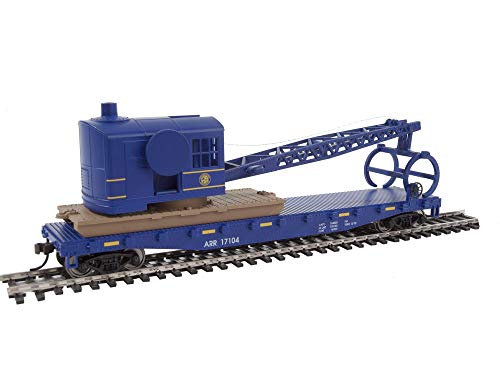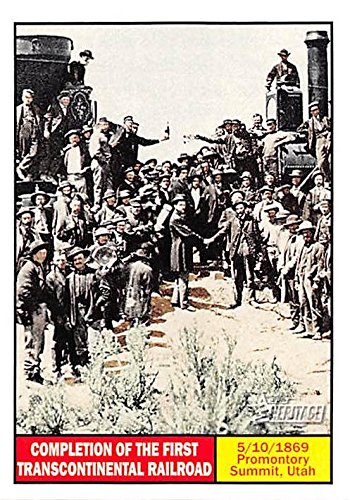Cal H
Train Attendant
I sure like that Crescent schedule better than today's version 

Short Line is Pensacola to Baldwin.Of course, thanks I believe to Hunter Harrison, a short line now owns the section between, I think, Pensacola and Tallahassee. That's a prohibitive problem for a cross-country Sunset right there. The STB should flatly ban sales of main line segments.
Can you explain this? Here or in DM's.And then there is the matter of Kansas City Union Station access
Access to Kansas City Union Station is via the Kansas City Terminal Railway, officially a Class III. It is jointly owned by the railroads that serve the KC area. Something similar applies in New Orleans with the New Orleans Public Belt and St. Louis with the St. Louis Terminal Railroad Association (TRRA).Can you explain this? Here or in DM's.
Learn something new every day, thanks!Access to Kansas City Union Station is via the Kansas City Terminal Railway, officially a Class III. It is jointly owned by the railroads that serve the KC area. Something similar applies in New Orleans with the New Orleans Public Belt and St. Louis with the St. Louis Terminal Railroad Association (TRRA).
I believe that in the original agreement, Amtrak also had access rights to any other line owned by a railroad joining Amtrak, even if there was no longer passenger service on said line, prior to Amtrak takeover, as well as start service on a later date, such as they did on the Pioneer, and Desert Wind, which both had service prior to takeover.@jis is correct, it does not matter whether a shortline or a Class I owns a stretch of railroad, Amtrak access rights continue on any given line whether or not it is sold. It follows the line, not the owner, and Amtrak has access rights to any line that hosted passenger service in 1970 by a carrier that joined Amtrak. Amtrak or another entity (state, Federal grant, etc) must fund any improvements required to host Amtrak that the railroad doesn't need for its own operations.








Access rights were limited to lines hosting passenger service by railroads joining Amtrak as of a date in late 1970, December, I believe.I believe that in the original agreement, Amtrak also had access rights to any other line owned by a railroad joining Amtrak, even if there was no longer passenger service on said line, prior to Amtrak takeover, as well as start service on a later date, such as they did on the Pioneer, and Desert Wind, which both had service prior to takeover.
I am not sure that right extended to new lines acquired after the start of Amtrak.
Goodness, given the effort it took to get two trains a day, and Mobile's resistance to even two trains per day and the caveats that it has placed on maintaining that level, I wouldn't be wistful about more service. I don't know what is wrong with these schedules under the circumstances.It’s a step in the right direction. I just wish once it starts service that the frequency of service each way would be more frequent—like in Europe. I live in Pass Christian and would love to be able to board the train in BSL and get to New Orleans for my Dr appointment, eat lunch and then return home at a convenient time.
The proposed Amtrak Mobile to New Orleans passenger rail service is scheduled to depart Mobile at 6:30 AM and 4:30 PM daily, and arrive in New Orleans at 11:18 AM and 9:14 PM. How is this user friendly and what population segment are they trying to serve? I’m going to have to keep driving
Aren't there a lot of Viewliners sitting in storage? Are those an option? Or are they in storage because they need a ton of maintenance like all other equipment in Amtraks fleet?
The Venture cars in the Midwest haven't freed up enough Horizons for the Gulf Coast service?I'm trying to figure out how Amtrak is going to round up enough Horizon coaches to get the new Gulf Coast service going next year at all, with the first Airo deliveries now not expected until close to spring of 2026 (per Washington State Department of Transportation, I'm told) for the Amtrak Cascades.
I agree! Short trains not triggering the crossing gates is the host railroad's problem, since it clearly doesn't affect all railroads. Judging from what I've seen on rail-cams, I think Amtrak's using baggage cars to lengthen trains sufficiently. Which is better than using Superliners but still not ideal.I really hope Amtrak isn't planning to use any of the soon-to-be-released Capitol Limited Superliner coaches to convert another Chicago short-haul service to Superliner.
I'd be concerned about restroom capacity on those cars. You'd certainly have to limit the number of people on each car for that reason. And, of course, there's the uncomfortable seating (oh wait, Ventures!).How about Amtrak getting a short term lease for the Caltrain bilevels now in storage in the Bay Area.
What I have heard is that each consist will be Two Coaches and one Club-Dinette, all Horizon for starter, bracketed between a P42 and a P42c.I've also been wondering how many cars they're planning for each of the two trainsets they'll apparently need. If it's only three coaches and a food service car per trainset, plus a spare of each, for example, that would ease the problem some.
Thank you for that info. That definitely would seem to put enough equipment for the Gulf Coast service within reach without doing damage to any of the existing Horizon cities, but Amtrak is certainly going to have to keep all of the remaining serviceable Horizon fleet in service, save perhaps for a food service car or two (I think two or three of those are now in storage but probably needing overhauls). And there will be no room for further system expansion until the Airos start coming on line. That'll be in Seattle, of course, and out here we're hearing now that the the first trainset is probably going to start running on one Cascades round trip closer to June or July of 2026, not February or March, due to supply chain problems that are cropping up.What I have heard is that each consist will be Two Coaches and one Club-Dinette, all Horizon for starter, bracketed between a P42 and a P42c.
Wonder how many breakdowns they will have. Haven't the P42s been increasingly unreliable as of late?bracketed between a P42 and a P42c.
They still seem to be more reliable than the ALC-42s.Wonder how many breakdowns they will have. Haven't the P42s been increasingly unreliable as of late?
Isn't great how our two options are unreliable and even more unreliable?They still seem to be more reliable than the ALC-42s.